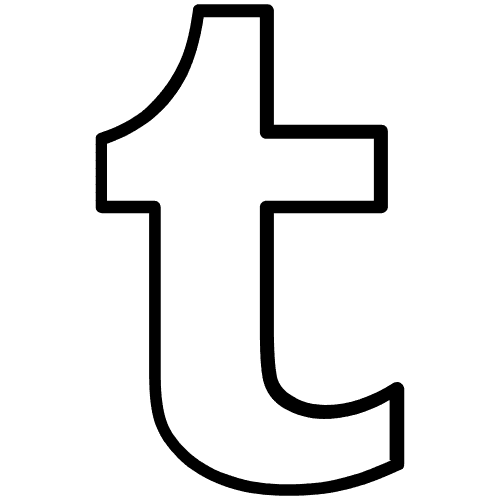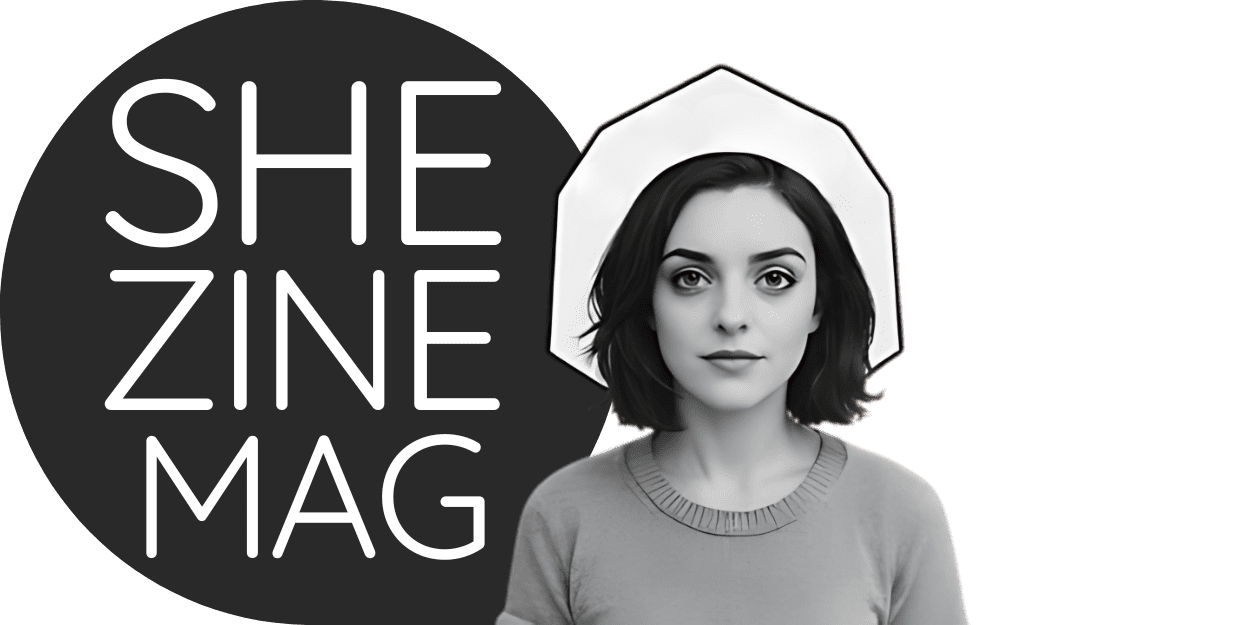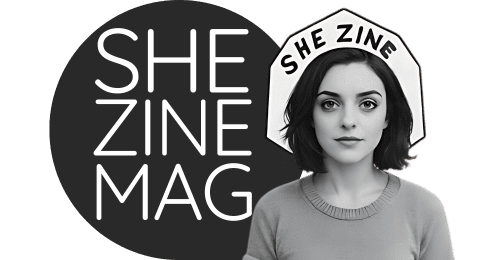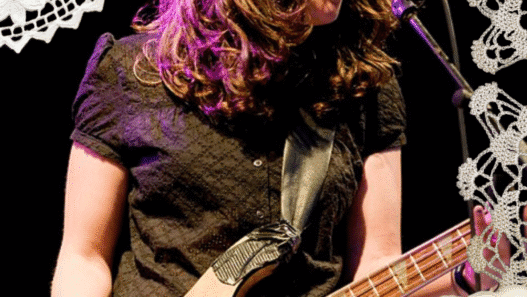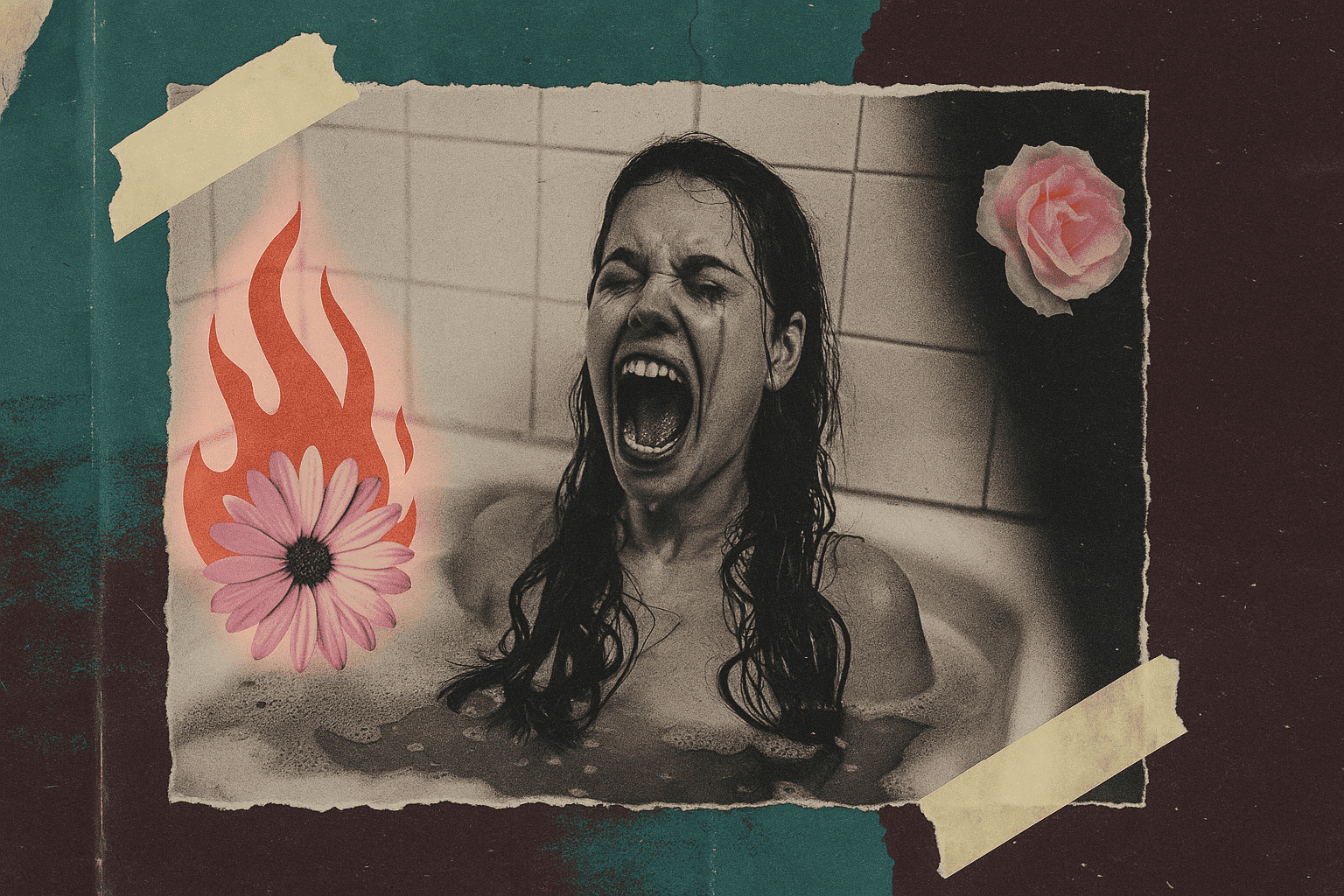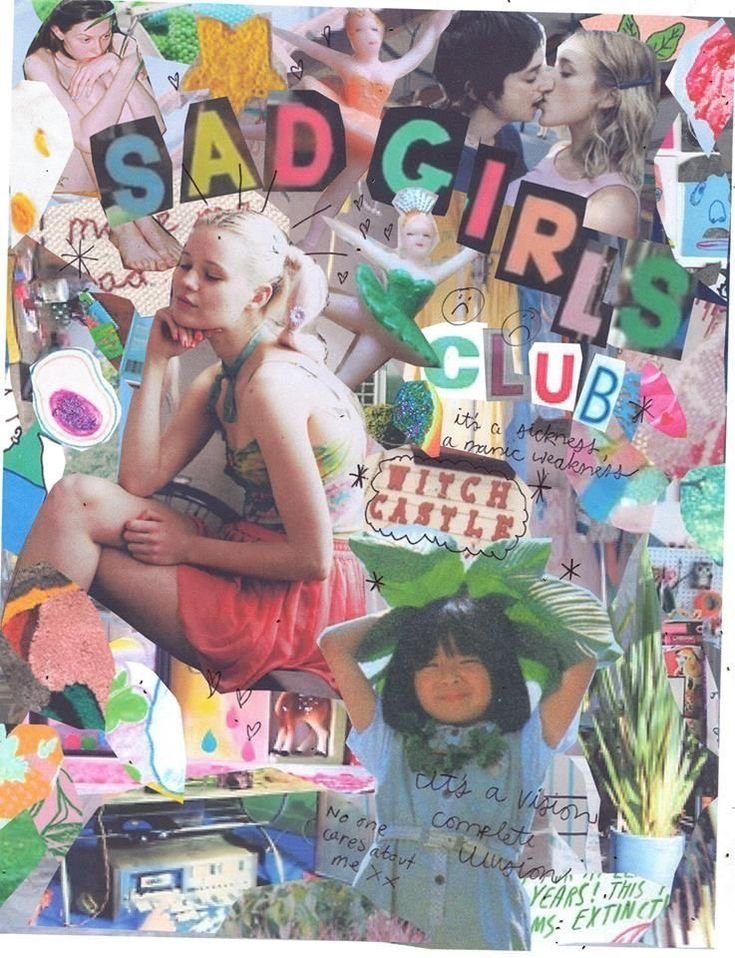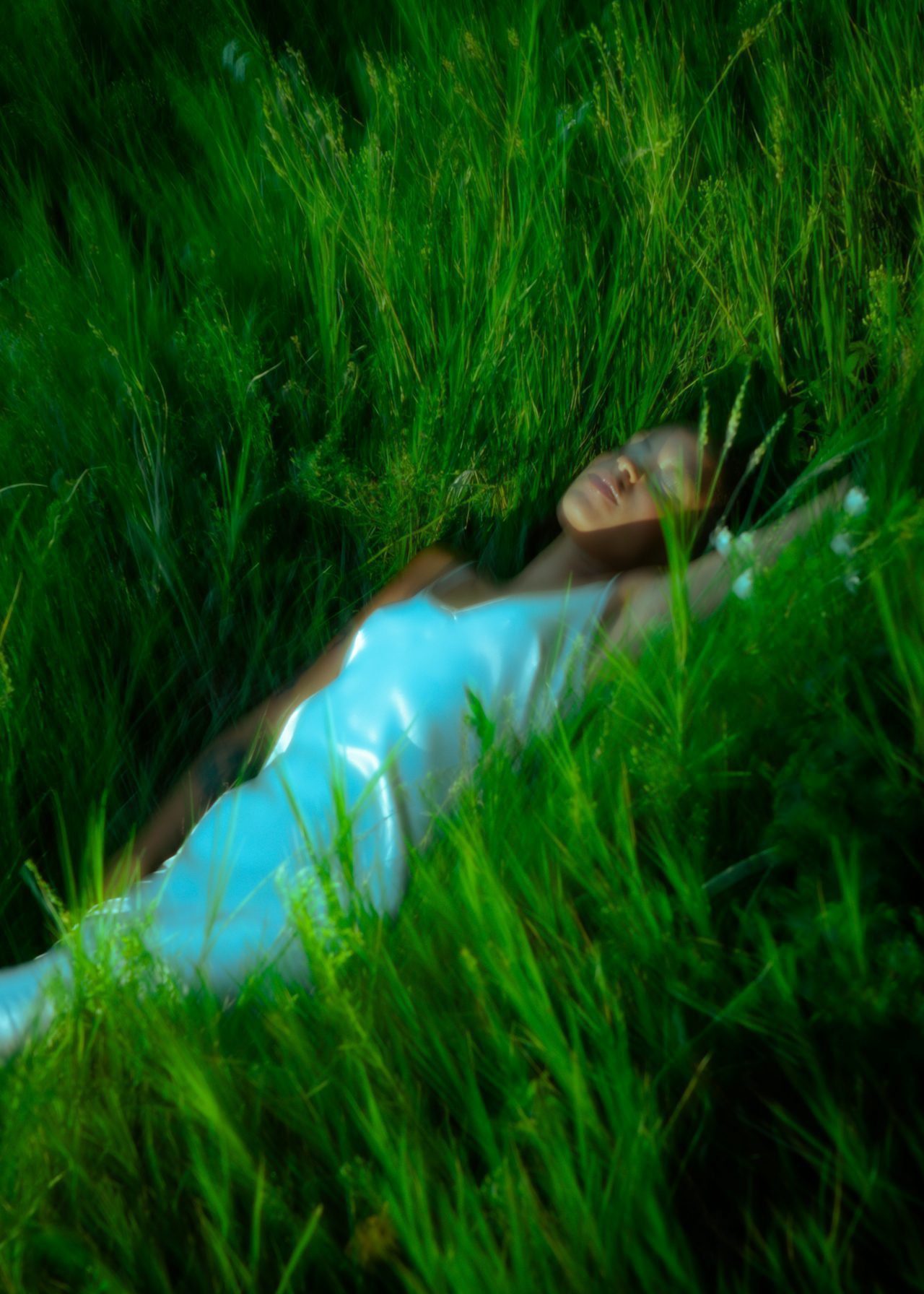Content Note: This piece talks about creative grief, burnout, and the destabilizing effects of AI on artists’ livelihoods and identities. If you’re raw about your own work being copied, scraped, or sidelined, read gently. You’re not alone in those feelings — and you don’t have to push through if it’s too much today.
You weren’t imagining it — the ground really did shift.
You logged on with a half-formed idea. A phrase. A sketch. A maybe. Something weird, something slow, something yours. Before your tea steeped, the internet had already cranked out five versions of it: one AI-generated social graphic with dead eyes, one Medium post ghostwritten by ChatGPT, and three Etsy knockoffs pumped through a Canva template farm.
You blinked at your screen. Your stomach dropped.
The idea was never finished.
But the machine had already finished with it.
And now it’s monetized.
Welcome to the new existential crisis: AI is eating creativity. Not in a cool speculative sci-fi way. In a real-world, late-stage capitalist, destabilizing-your-sense-of-worth kind of way. You’re not being dramatic — you’re being observant. The art world, the media world, the everything-world is being reshaped around automation, and creatives are expected to keep up or shut up.
This piece isn’t here to help you “future-proof your career.”
This is not a cheerful AI hack listicle.
This is a field guide for staying human.
It’s for the burned-out, the pissed-off, the glitchy, the stubborn, the sensitive ones still scribbling on Post-its and dreaming through insomnia.
It’s for the muses under siege.
PART I: First, Let Yourself Grieve
You’re not lazy. You’re grieving a future you were promised.
The pain you’re feeling isn’t just a fear of obsolescence. It’s a death of intimacy — with your own ideas, with your own weirdness, with the small ecosystem of culture that once supported artists instead of replacing them with prompts.
We were told the future would be open-source, collaborative, ethically sourced, punk. Instead, we got data scraping, cloned voices, and a Silicon Valley parasite class telling us to “embrace disruption.”
It feels like whiplash. Because it is.
You are not alone. This is happening at scale.
In 2023, Polish fantasy artist Greg Rutkowski discovered his name had been used in AI art prompts over 400,000 times. He never consented. The models trained on his work — and spat out versions of his signature aesthetic — without credit or compensation.

“I felt like I was disappearing while still alive,” Rutkowski said.
“Like someone had made a clone of me that didn’t need me anymore.”
His story exploded across the art world. But so did the pushback: “It’s just inspiration.” “Art evolves.” “Be flattered!”
This isn’t flattery. This is creative extraction. And it’s becoming the norm.
Copywriters. Voice actors. Essayists. Music producers. Indie game developers. Fan artists. Zinemakers. Everyone is watching their style be mimicked by people who’ve never read their work — and by machines that don’t even know what a feeling authentically is.
It’s not burnout — it’s derealization.
Clinical psychologists are describing this new wave of stress appearing for creatives in the post-AI boom “a new form of grief” and a “A loss of symbolic value”. When your style, voice, or artistic rhythm can be mimicked instantly, you start to question your worth. Not just professionally. Existentially.
This isn’t just creative fatigue. This is existential threat to creative identity. It feels like the rug is being pulled out from under you and the floor underneath it and the ground beneath that.
And instead of comforting each other, many of us are gaslit with “just adapt.”
No.
Creative disillusionment is a collective condition
You are not broken. You are not slow. You are not behind.
You are responding, appropriately, to a world that is becoming increasingly synthetic and hostile to care.
What you’re feeling isn’t just exhaustion — it’s mourning.
And you’re allowed to mourn.
PART II: What We’re Actually Up Against
It’s not “robots replacing jobs.” It’s “capital replacing ethics.”
Let’s get something straight: this isn’t about AI having talent.
This is about corporations using tools that simulate creativity to undermine labour, discredit originality, and offload risk.
It’s not the machine that’s greedy. It’s the people deploying it.
When Buzzfeed announced it would use AI to generate quizzes and articles, it framed the move as “exciting innovation.” A month later, it laid off dozens of actual writers.
When Universal Music demanded Spotify pull AI-generated deepfake songs of Drake and The Weeknd, the conversation wasn’t about artistic integrity — it was about who had the legal right to monetize the fake.
Prompt engineering ≠ authorship
We’re entering a dangerous moment where people believe “typing a really good prompt” makes them a co-creator. But feeding inputs into a machine that’s trained on scraped, stolen, uncredited human work isn’t art. It’s remixing without ethics.
A lot of “AI poets” are just pulling up trauma metaphors scraped from mental health blogs and Tumblr archives. A lot of “AI visual artists” are just generating Frankensteined versions of women’s faces with bad hands and no context.
It looks like content. It smells like content. But it doesn’t feel like anything.
Because it was never meant to.
The “AI boom” is already flattening culture
By mid-2024:
- Hundreds of Amazon books are discovered to be AI-written using real authors’ names
- AI-generated recipes flood Pinterest, with incorrect instructions and plagiarized intros
- Fashion brands use AI to create “inspired by” collections scraped from indie designers
- Spotify algorithms recommend deepfake songs over real ones
- Job postings in media start asking for “AI proficiency” instead of writing portfolios
The future if we do nothing? A vibe desert.
What happens when AI fully replaces freelance illustrators, copywriters, indie animators, weird collage artists, typographers, zinesters, and small-run creators?
We get a visual and emotional monoculture.
Everything looks fine. Everything sounds close enough.
Nothing hits.
Culture becomes a stream of echoes in a well.
And we start forgetting what real actually felt like.
PART III: But Some Artists Are Fighting Back — And So Can You
Imogen Heap: Consent as Creative Infrastructure
In the early 2020s, Imogen Heap developed a platform called StyleFilter™, which allows artists to license their own creative signatures — voice, sound, phrasing — for use in AI remixing.
Her rule? Consent is required. Attribution is enforced. Royalties are automated.
“I’m not anti-AI,” she says. “But I am anti-theft.”
Heap’s model is less a music platform and more a philosophy: if someone’s going to train a machine on your essence, they better pay for it. And they better ask first.
What she’s building isn’t just a tool. It’s a boundary.
Sougwen Chung: Making Friends With Ghosts
Sougwen Chung is an artist who draws and paints live alongside robotic arms that have been trained on their own past movements. The result? Improvised performances that blur the line between self and machine, memory and mimicry.
“It’s not about control,” they say. “It’s about responding. About letting myself be mirrored — but not overwritten.”
Rather than treating AI as a threat or a gimmick, Chung treats it like an ancestor. Or maybe a ghost. Not something to be dominated. But something to be danced with — carefully, curiously.
Refik Anadol: Scale + Ethics = Possible
You’ve probably seen Refik Anadol’s work. Massive data-driven installations made from real-world archives: weather patterns, brain scans, museum collections. The twist? His work documents every data source used. Every collaborator. Every permission. Nothing is scraped. Everything is accounted for.
“AI is like electricity,” he says. “You have to know how to ground it. Or it burns the house down.”
His art isn’t about replacement. It’s about revealing what was already there — just hidden. In doing so, he models what AI ethics can look like at scale.
Zine Culture Is Re-Exploding — and It’s Not a Coincidence
In response to all this, a quiet resistance is growing:
- DIY zine fests are back
- Sticker economies are booming
- Mail-order art is on the rise
- Artists are organizing digital picket lines
- Mutual aid funds are forming for AI-displaced creatives
We are printing again. Binding by hand. Whispering truth in collage margins.
Because paper can’t be scraped.
Because vulnerability is not a dataset.
Because not everything should be optimized.
Other creative resistors worth watching:
- Latent.Space: A group of artists building anti-AI propaganda zines and guides for evading algorithmic mimicry
- Zinecoop Hong Kong: Using zines as anonymous protest documentation (super cool)
- The Glitch Feminism Collective: Blending theory and drag to dismantle techno-essentialism (super duper cool)
- Data Workers Union (EU): Advocating for data rights for artists and users alike
You’ve got the links! Give ’em all a good click!
PART IV: The Worst-Case Timeline — And Why We Still Have Time
2025–2028: The Corporate Flood
- Every freelance site integrates “AI options”
- Job posts ask for “prompt skills” instead of portfolio
- Brand campaigns are built with Midjourney and ElevenLabs
- Magazines quietly replace columnists with ghostwritten AI
- Review sections are indistinguishable from auto-promo blurbs
By the end of 2028, it becomes normal to ask:
“Was this real?”
“Did a person make this?”
“Does it matter?”
2029–2032: Deepfake Culture Becomes the Norm
- Spotify and YouTube playlists are mostly synthetic artists
- Dead actors star in ads for things they never endorsed
- News images are increasingly generated, not photographed
- Students grow up reading machine-written books
- “Authenticity” becomes a niche marketing term
The line between remix and deception dissolves.
People stop checking sources.
Everything feels real-ish.
And nothing sticks.
2033–2035: Creativity as Class Barrier
- Rich artists license their voice/style for passive income
- AI-assisted creation becomes standard in funded projects
- Handcrafted work is labeled “slow,” “unreliable,” “sentimental”
- Critics disappear — replaced by engagement metrics
- Fewer and fewer people make things just to feel
This is how culture becomes a gated community.
2036–2040: The Emotional Blackout
- Nobody trusts their instincts anymore
- Nothing feels alive
- Audiences are tired, confused, indifferent
- Artists feel invisible, even when “succeeding”
- Therapy memes start to feel AI-generated too
And slowly, something starts to break in the collective psyche.
People stop reaching for beauty.
They start scrolling, and never stop.
“Descent”
Data briefly joins Lore’s plan for artificial dominance. He’s promised emotion, power, and freedom. But those promises are hollow. Lore doesn’t offer connection. He offers control. In the end, Data chooses autonomy — and walks away from the synthetic high.
We must do the same.
Not everything powerful is good.
Not everything fast is free.

PART V: The Best-Case Timeline — If We Choose It
2025–2028: The Artistic Rebellion
- AI-free certifications become common
- Zines, mail art, cassette tapes boom
- Artists openly refuse to work with companies using stolen data
- Crowdfunding surges for analog work
- Governments begin exploring ethical AI frameworks for culture
“Made by human” becomes both tagline and shield.
2029–2032: Consent Infrastructure Becomes Law
- Datasets require licenses and opt-in agreements
- AI platforms label generated work with transparency metadata
- Unions for digital artists become legally recognized
- Archive preservation is prioritized over algorithm training
- Media literacy is taught in schools
We stop mistaking everything online as up for grabs.
2033–2035: Cultural Fluency Is Revalued
- People crave nuance again
- Journalists, critics, and educators regain respect
- Trust becomes currency
- Artists get hired to think, not just decorate
- Weirdness becomes valuable — not risky
We remember: beauty isn’t a product.
It’s a side effect of presence.
2036–2040: Art Returns to the Living
- Work feels like play again
- Creativity becomes a tool of liberation, not extraction
- Local presses, pop-up galleries, and community studios flourish
- Musicians tour weird venues again
- Everyone’s favourite artist is someone they actually know
Culture stops being content.
It becomes relationship.
PART VI: Your Resistance Toolkit — Stay Human, Stay Loud
1. Make Untrainable Work
The algorithm can only remix what it understands — and it does not understand your trauma, your hyper-specific slang, your dream about a two-headed raccoon priest. So:
- Write what feels dangerous.
- Include inside jokes your friends don’t even get.
- Misspell something on purpose.
- Say it ugly. Say it weird. Say it raw.
Zines. Glitch art. Found poetry. DIY metaphors with no commercial potential.
They’re not just tools — they’re wards.
Against scraping. Against mimicry. Against boredom.
2. Don’t Feed the Machine
There are ways to use tech without sacrificing yourself to it. Just because the app is free doesn’t mean the cost is. Before you post:
- Consider sharing low-res versions of visual work
- Use noindex meta tags on portfolio pages
- Add scrambler code or watermarks in your text
- Block known AI crawler IPs on your site
- Add weirdness that breaks parsing (strikethroughs, inside jokes, sideways logic)
And never — never — upload your full creative archive to a platform that can turn around and license it back to you for $49/month.
3. Set Boundaries with the Bot
Use AI if it serves your process. Not if it starts driving it.
Helpful uses might include:
- Organizing a messy outline
- Brainstorming terrible puns
- Generating random character names
- Summarizing 200 pages of dense theory
But it shouldn’t be used to:
- “Polish” your natural voice
- Mimic an artist you admire
- Draft your statement of intent
- Write on behalf of your politics, culture, or lived experience
Never let the machine explain you to yourself.
4. Protect Vulnerable Communities
AI is disproportionately being trained on:
- Marginalized creators’ uncredited writing
- Personal essays about trauma
- Cultural traditions and languages without context
- Public domain archives of colonized peoples’ stories
So when you say “I have nothing to lose,” remember — you might. But someone else might lose everything if you feed their words to the beast.
5. Build Real-World Creative Infrastructure
Remember potlucks? Skill shares? Collage nights? Zine trades?
Remember learning by watching someone else move?
We need those again. More than ever.
- Start a monthly glitch club
- Host a “bad art night”
- Leave zines in bathrooms and bus stops
- Teach a workshop for people who’ve never touched a printer
- Trade designs, not just likes
Online spaces are increasingly being optimized against slowness, nuance, and joy. So we need to rebuild those values offline.
6. Create Archives That Can’t Be Scraped
You know what AI can’t access?
- That sketchbook in your closet
- That conversation at the back of the show
- That handwritten postcard you mailed to your ex
- That track you only play live
- That messy Google Doc with 100 abandoned poems
Not everything needs to be published.
Some work is for resistance. Some is for intimacy.
Some is just for now.
Keep some of your magic in the dark. Where it can breathe.
PART VII: The Emotional Side of All This
The Creative World You Grew Up In Is Gone — and That Hurts
You might remember:
- When blogs had comments that turned into friendships
- When collage art felt transgressive
- When posting fan art on Tumblr wasn’t a copyright risk
- When glitching meant something — not just a filter
You’re allowed to miss that world.
You’re allowed to be angry about the one that’s replacing it.
And you’re allowed to feel scared.
This is grief. Deep and real.
But You Are Still Here — And You’re Still Making Things
Despite the flood of synthetic sludge.
Despite the platforms going dark.
Despite the clients ghosting you for a Midjourney render.
You’re here.
Thinking.
Feeling.
Dreaming.
Creating.
Maybe slower. Maybe sadder. Maybe angrier.
But you’re still human. And that is your advantage.
Because humans make things that hurt. That breathe. That glitch. That contradict. That bleed.
Things the machine can’t mimic because it doesn’t have skin.

“In Theory”
Data tries dating a crewmember. He reads books on romance. Tries jokes. Attempts affection. But it falls apart. Why? Because love isn’t a formula. And neither is creativity.
Some things are messy on purpose.
PART VIII: The Point Isn’t to Be Useful. The Point Is to Be Real.
Capitalism wants your creativity to be productive.
AI wants it to be predictable.
Your soul wants it to be a little feral.
That’s the battle.
Between the tidy and the wild.
Between the profitable and the painful.
Between the machine that says “generate faster”
and the gut that says “scream this into a zine and hide it under your bed.”
We know which side you’re on.
You’re here.
So What Now?
- Refuse efficiency.
- Refuse easy.
- Refuse perfect.
- Refuse the illusion that a bot will ever cry at your work.
Make the work that hurts to make.
That confuses the prompt engineers.
That reminds people what it feels like to be real.
“The Inner Light”
Picard is struck by an alien probe. He lives an entire lifetime in a few minutes — learns to play music, raises a family, grows old. When he wakes, it’s all gone. But the memory of the song remains. The music was never “real.” But it was true.
That’s what we do.
We make things that aren’t real — but are true.
We make things no bot can imagine.
Because we feel them first.

Final Transmission
If you’ve read this far, here’s what we know about you:
- You give a shit.
- You’re still making something, even if it’s in your head.
- You’ve got more soul in one unfinished draft than the entire OpenAI dataset.
- You are the thing the machine will never understand.
Don’t panic. But don’t disappear either.
Don’t go quiet. Don’t go bland. Don’t go corporate.
Stay glitchy.
Stay loud.
Stay human.
Still Human. Still Here.
This isn’t a guide for optimizing yourself. It’s a call to stay glitchy, grieving, and loud in the face of synthetic sameness.
→ Subscribe to The Edit — our weekly(ish) dispatch of rebellion, DIY survival, and creative resistance.
→ Submit Your Story — tell us how you’re resisting, grieving, or surviving in the AI era. We’ll never feed it to a bot.
→ Follow @shezinemagazine— stay connected to the New Girl Army.
If you want to learn more about our AI policies and usage rules, click here.
Sources and Further Reading
Art psychotherapy meets creative AI: an integrative review — A. Zubala et al. Frontiers
When the creative well dries up – burnout syndrome and art — K. Głaziewicz et al. ScienceDirect
Creative expression and mental health — D. Jean-Berluche et al. ScienceDirect
Exploring the potential influence of AI on population mental health — C. K. Ettman et al. PMC
Creativity and emotional exhaustion in virtual work — C. Santiago-Torner et al. PMC
Art therapy-based interventions to address burnout and psychosocial distress — M. Tjasink et al. BioMed Central
Insights From Art Therapists on Using AI-Generated Art in Art Therapy — F. Shojaei et al. Formative
Combining AI and artmaking for youth well-being — Penn Today article Penn Today

AXO (she/her) is a multidisciplinary creator, editor, and builder of feminist media ecosystems based in Toronto. She is the founder of She Zine Mag, Side Project Distro, BBLGM Club, and several other projects under the AXO&Co umbrella — each rooted in DIY culture, creative rebellion, and community care. Her work explores the intersection of craft, technology, and consciousness, with an emphasis on handmade ethics, neurodivergent creativity, and the politics of making. She is an advocate for accessible creativity and the power of small-scale cultural production to spark social change. Her practice merges punk, print, and digital media while refusing to separate the emotional from the practical. Above all, her work invites others to build creative lives that are thoughtful, defiant, and deeply handmade.
